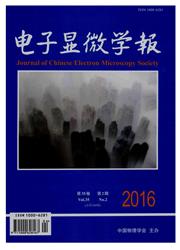

 中文摘要:
中文摘要:
沙柳木蠹蛾(Holcocerus arenicola staudinger)是危害沙柳的一种钻蛀性害虫,在其求偶、交配过程中,性信息素起着关键作用。作者对沙柳木蠹蛾雌蛾腹末第VIII节、第IX节、第VIII~IX节节间膜及产卵器表面的化学物质采用溶剂提取并进行气相色谱分析,根据性信息素主成分的保留时间和含量确定性信息素分泌腺体的分布部位。同时对雌蛾性信息素分泌腺体和雄蛾触角进行了扫描电镜观察。结果表明:沙柳木蠹蛾的性信息素分泌腺体主要分布于雌蛾腹末第8~9节的节间膜上,表面密集分布着大量的刺状锥形突出体;雄蛾触角中分布有6种感器,分别为毛形感受器、刺形感受器、腔锥形感受器、芽形感受器、柱形感受器和锥形感受器,其中以毛形感受器最多。雄蛾触角上毛形感受器的分布明显比雌蛾触角上的数量多且密集。
 英文摘要:
英文摘要:
Holcocerus arenicola Staudinger is an important root-boring pest of Salix psammophila. The sex pheromone plays a key role in countship and copulation of H. arenicola. Semiochemicals extracted from segment VIII, segment IX, Ovipositor and the intersegmental membrane between abdominal segment VIII and IX were analyzed by gas chromatography ( GC). Based on comparison of retention time and content of major components in sex pheromone, the distributive location of the sexual gland was determined. Meanwhile, the sexual gland of female and antennae of male were observed by scanning electron microscope. The results showed that the sexual gland is mainly distributed in the intersegmental membrane between segment VIII and IX. Many plump cones densely occur on the surface of the sexual gland. Six types of sensilla are identified on male antenna flagellum, including sensillum trichodeum, sensillum chaeticum, sensillum coeloconicum, Sensillum basiconica, bud-shaped sensillum and sensillum cylindric, of which the sensilla triehodeum are significantly more abundant and dense on males antennae than that of females.
 同期刊论文项目
同期刊论文项目
 同项目期刊论文
同项目期刊论文
 期刊信息
期刊信息
